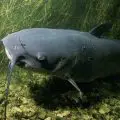
Tuna fishing techniques are a must learn for everyone who loves this delicious type of fish. Tuna is one of the most consumed seafood in the entire world. The fish is classified among the largest fish, and its ability to maintain a body temperature above the water temperatures makes it survive in different waters. Tuna has an excellent taste without forgetting its high content of omega-three acids ideal for our bodies. If you plan to fish for this great fish, there are few things that you are going to go over before we get into how to fish for them. Catching tuna is not as easy as catching other small fish due to its size and swimming tactics.
A few essential things to know about Tuna to start
- They are warm-blooded.
Tuna fall under the category of the few warm-blooded fish. This feature enables them to maintain their body temperatures thus can survive in both tropical and the temperature waters.
- Different breeds.
There are various breeds of Tuna which are differentiated by the size and the weight. Some of the breeds include: Bullet tuna which weigh from 4 to 50 pounds, and Albacore, which weighs about 100 and above pounds.
- They are easy to catch when hungry.
Tuna feed on other water animals and the giant breeds feed on the small ones. Thus, if need an easy way to catch the large tunas, target the areas with small fish.
Top methods for catching Tuna
-
Handling
This method involves the use of a vertical fishing line and a barbed hook. This method has been used for a very long time and can only work in areas with fewer waterways, and with the use for a small boat.
This Tuna fishing method is suitable for catching Albacore. Trolling is one of the most sort out tuna fishing techniques, especially for large scale fishing in areas such as the northern part of pacific regions.
-
Long-lining
As the name states, this kind of fishing method involves the use of a long fishing line which is set in a large area of the waters. The line is hooked with baits which attract the Tuna to the line. The long lining method is suitable for catching the small Tuna such as the yellowfin.
Tips to guide you when fishing for Tuna
-
Study the weather first.
The weather plays a significant role when fishing as it dictates how the entire process will go. First off, you don’t want to have a hard time controlling the movements of your boat while you are paying attention to your fishing experience. When it is too windy and rough boats tend to lose stability and may move to the direction you don’t intend it to. Therefore, take some time to check out how the weather behaves before you row the boat.
- Pack well
Fishing requires one to be fully prepared with all the necessary gear at the ready. Don’t wait until the day of fishing to start putting your things together. Get all the boat and fishing gear you will require at an early date. This can be done the day before or longer if you plan on being out all day. Anything can happen while fishing, and you should pack spare fishing lures, bait, reels, and fishing rods.
- Select a good fishing spot
As discussed earlier, Tuna are likely to be found in deep oceans and saltwater. Therefore, find a good fishing point where the fish may frequent. This helps you save your time and energy when fishing.
- Focus.
Distractions from the sky and waters are standard, especially when fishing in large seas. Although you cannot control some of the disturbances, you must focus on your goal. Pay attention to some signs that may predict the availability of the fish around that point. One thing to note is that Tuna feeds on other small fish in waters such as the flying fish. So, pay more attention in areas with such fish as you are likely to find the tuna you are after.
- Invest in technology
Apart from learning the necessary tuna fishing techniques, buy fishing gadgets. These gadgets are referred to as fish finders and are used to help in identifying the right areas with fish. The technical device can measure the deepness of the waters hence making it easy for the fisher to find the areas where the fish hide.
- Be prepared and do not panic
A lot of people, especially first-time fishers, get frightened the first time they catch a big fish. A fish will always cause some resistance trying to unhook, and if you are not well prepared, it can easily pull you into the water, or you may let go of the hook. Monitor the movement of the hook, and in case you feel it pulling downwards, get an excellent grip and stand firm. Keep in mind that Tuna is quite massive, and thus, they tend to cause more resistance when caught. If need be put your rod and reel in the holder to help you keep it at bay, or even better have a buddy help you reel it in if it is too big. You’ll both enjoy the story and the catch that comes with it.
- Use chum slicks
Although bait plays a considerable role in fishing as it attracts the fish to the hook, chum slicks work magic when fishing for Tuna. The chum slicks are made of an oil-like substance which helps in drawing the fish. If you pour it close to your boat, the Tuna will swim towards it, which makes your fishing fast.
- Seek help
This is vital for first-time fishers. Tagging a friend along when going fishing not only makes it a fun experience, but you may need a helping hand along the way. So, if your friend or relative is willing to join you for tuna fishing, don’t hesitate to accept the offer.
Conclusion
As one of the world’s best fish, Tuna is also a fish that requires one to invest in great fishing techniques. The above discussed are some of the guides that you may need to employ when fishing this breed. Also, make sure you have reliable and robust fishing gears to make the process smooth. You should check the Tuna’s stomach once you butcher it to see what kind of bait it likes. This will help you in choosing the suitable bait for your next fishing sessions. Tuna can come in such a vastly different size that you need to always think about the type you are fishing for and where before you go out. Don’t be caught with the wrong equipment.











